

Year 6 SATs
2026 Presentation for Parents, Carers & Guardians
What are the SATs?
● SATs are the Standardised Assessment Tests that are given to children at the end of Key Stage 2.
● The SATs take place over four days, starting on Monday 11th May ending on Thursday 14th May.
● The SATs papers consist of:
○ Grammar, punctuation and spelling (paper 1: GPS) – Monday 11th May
○ Grammar, punctuation and spelling (paper 2: Spelling) – Monday 11th May
○ Reading – Tuesday 12th May
○ Maths (paper 1: Arithmetic) – Wednesday 13th May
○ Maths (paper 2: Reasoning) – Wednesday 13th May
○ Maths (paper 3: Reasoning) – Thursday 14th May
● Writing is assessed using evidence collected throughout Year 6. There is no Year 6 SATs writing test.

When and how the SATs are completed
● The tests take place during normal school hours, under exam conditions.
● Children are not allowed to talk to each other from the moment the assessments are handed out until they are collected at the end of the test.
● After the tests are completed, the papers are sent away to be marked externally.
● The results are then sent to the school in July.
● Each test lasts no longer than 60 minutes:
○ Spelling, punctuation and grammar (paper 1: Grammar/ Punctuation) – 45 minutes
○ Spelling, punctuation and grammar (paper 2: Spelling) – 15 minutes
○ Reading – 60 minutes
○ Maths (paper 1: Arithmetic) – 30 minutes
○ Maths (paper 2: Reasoning) – 40 minutes
○ Maths (paper 3: Reasoning) – 40 minutes

Specific arrangements for SATs
Children with additional needs (who have similar support as part of day-to-day learning in school) may be allotted specific arrangements, including:
● Additional (extra) time;
● Tests being opened early to be modified;
● An adult to scribe (write) for them;
● An adult to read for them (including a translator);
● The use of prompts or rest breaks;
● Arrangements for children who are ill or injured at the time of the tests.
Pupils with an EHCP are automatically allowed up to 25% additional time (except for the spelling paper, which is not strictly timed). Pupils who use the modified large print or braille versions of the tests are automatically allowed up to 100% additional time.

The results
Tests are marked externally. Once marked, the tests will be given the following scores:
● A raw score (total number of marks achieved for each paper);
● A scaled score (see below);
● A judgement on if the National Standard has been met.
After marking each test, the external marker will convert the raw score to a scaled score. Even though the tests are made to the same standard each year, the questions must be different. This means the difficulty of the tests may vary. Scaled scores ensures an accurate comparison of performance over time.
Scaled scores range from 80 to 120.
A scaled score of 100 or more shows the pupil is meeting the National Standard.

Grammar, Punctuation and Spelling: Monday 11th May
Grammar, punctuation and spelling consists of two papers.
● Paper 1 focuses on all three elements (grammar, punctuation and spelling or GPS). The paper lasts for 45 minutes.
● Paper 2 consists of a spelling test only. It should take approximately 15 minutes, although this is not a set amount of time (pupils should be given as much time as they need to complete the test).

Grammar, Punctuation and Spelling: Paper 1 (GPS)
The children will have been working hard with their class teacher on developing and securing their knowledge of the technical vocabulary needed in this test.
This test focuses on:
● Grammatical terms/ word classes;
● Functions of sentences;
● Combining words, phrases and clauses;
● Verb forms, tenses and consistency;
● Punctuation;
● Vocabulary;
● Standard English and formality.
This test requires a range of answer types but does not require longer formal answers.

Grammar, Punctuation and Spelling: Paper 1 (GPS)
Example questions:



The council maintain the local park.

Grammar, Punctuation and Spelling: Paper 2 (spelling)
Paper 2 is a shorter paper that focuses solely on spellings.
Example questions:


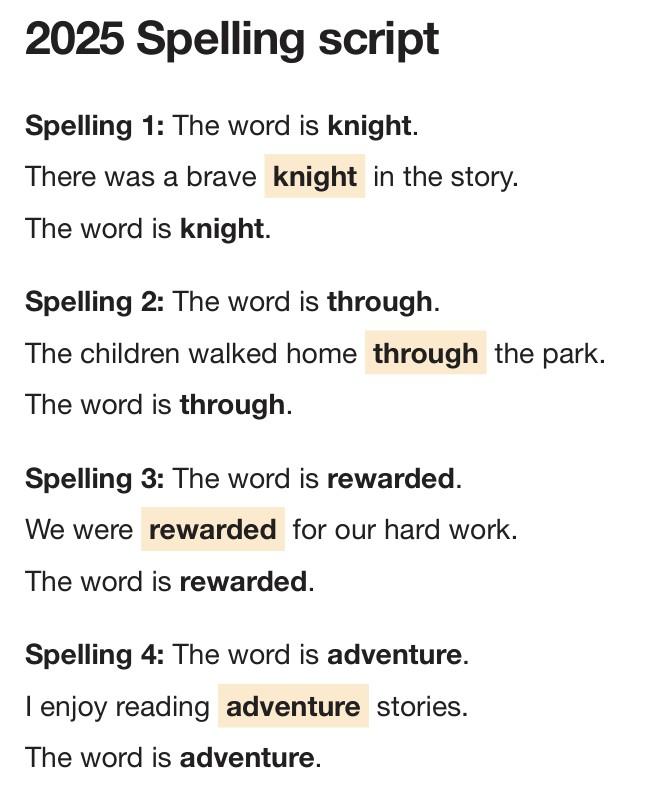
Reading: Tuesday 12th May
There is one reading test that lasts for 60 minutes.
The test is designed to measure if the children’s comprehension of age-appropriate reading material meets the national standard. There are three different set texts for children to read. These could be any combination of non-fiction, fiction and/ or poetry.
The test covers the following areas (known as Content Domains):
● Give/ explain the meaning of words in context;
● Retrieve and record information/ identify key details from fiction and non-fiction;
● Summarise main ideas from more than one paragraph;
● Make inferences from the text/ explain and justify inferences with evidence from the text;
● Predict what might happen from details stated and implied;
● Identify/ explain how information/ narrative content is related and contributes to meaning as a whole;
● Identify/ explain how meaning is enhanced through choice of words and phrases;

● Make comparisons within the text.
Reading
The reading SATs paper requires a range of answer styles.
Example questions:




Example questions:
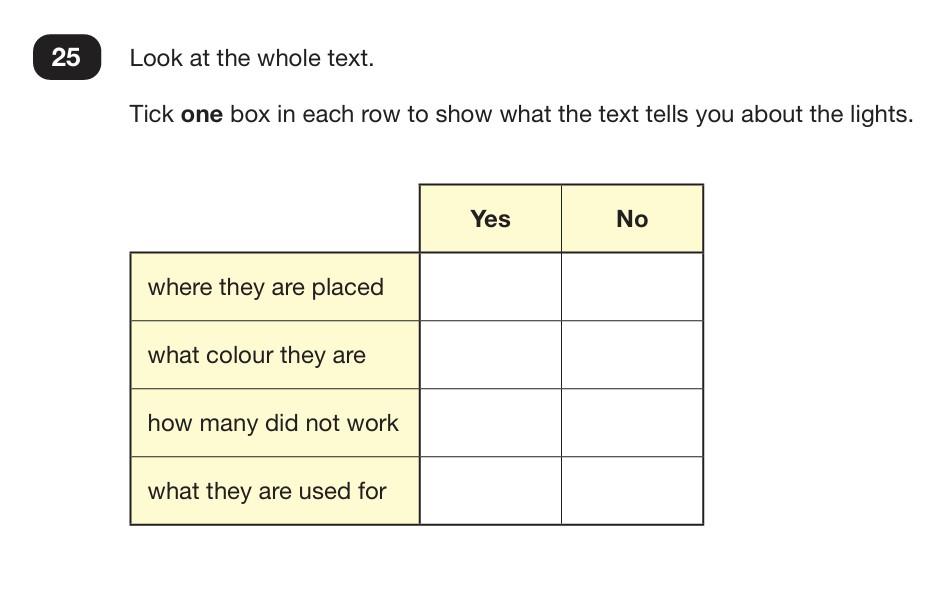
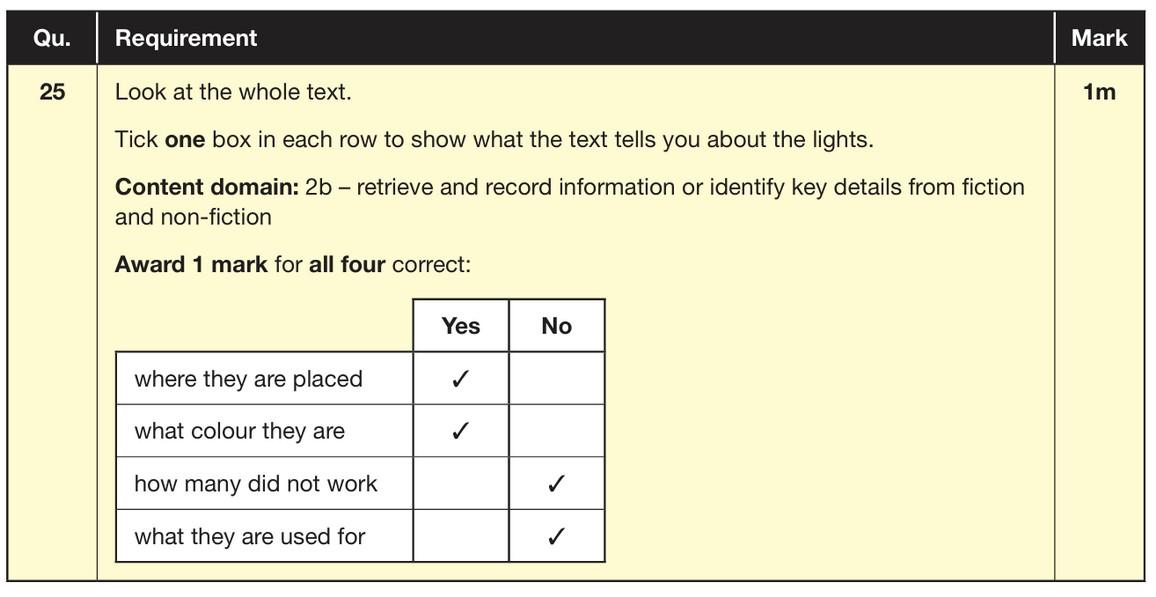
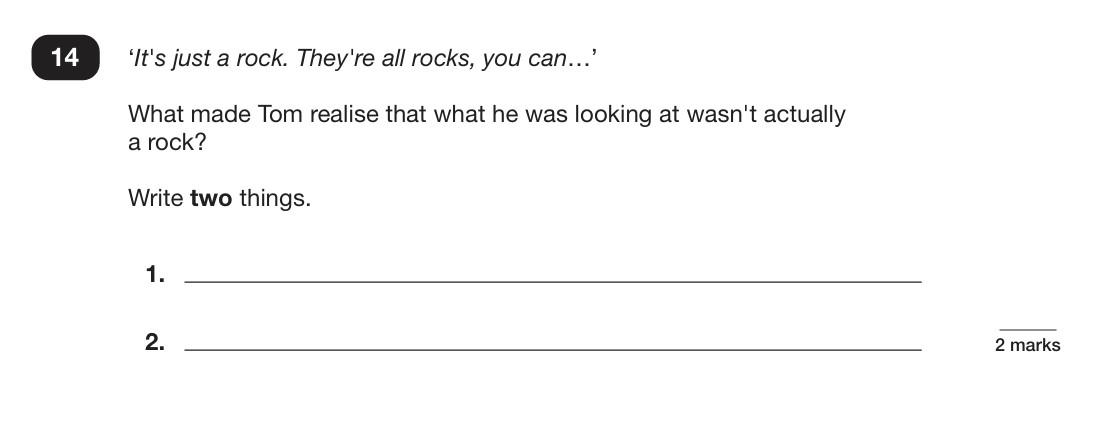


Example questions:
3 mark question
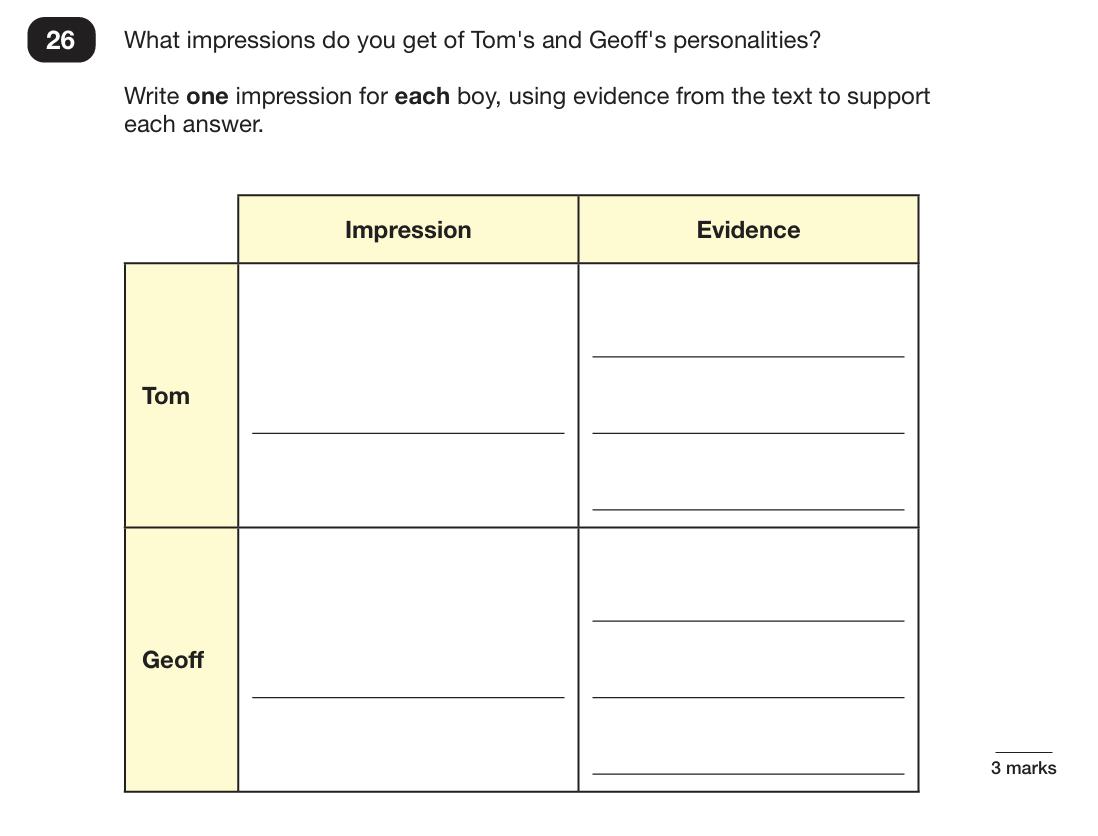

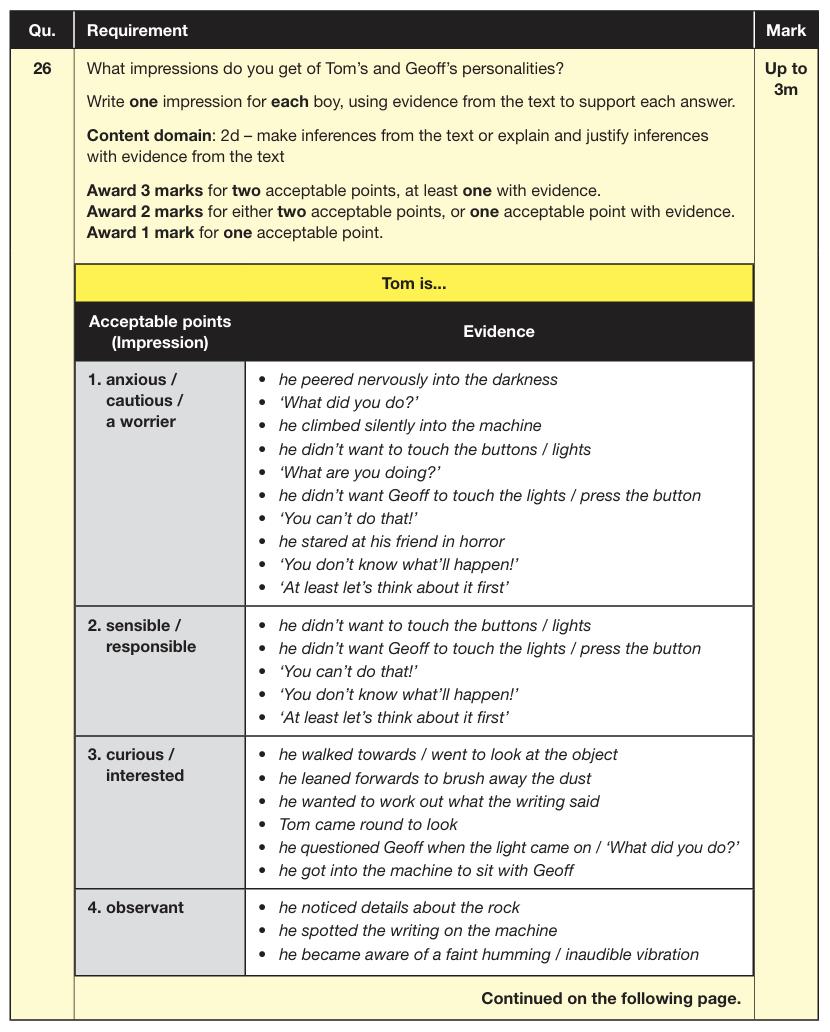

Reading
Since the current testing formation for the SATs began in 2016, there has been a tendency for three types of questions to be the most popular.
In the 2025 Reading SATs paper,
● 12% of marks could be gained from answering questions involving giving and explaining the meaning of words in context;
● 30% of marks could be gained from answering questions involving retrieving and recording information or identifying key details from a text;
● 48% of marks could be gained from answering questions involving making inferences from a text and justifying inferences with text evidence.
When reading with your child at home try focusing on these types of questions.

Maths: Wednesday 13th May and Thursday 14th May
The maths assessments consist of three tests.
● Paper 1: Arithmetic (30 minutes) – Wednesday 13th May
● Paper 2: Reasoning (40 minutes) – Wednesday 13th May
● Paper 3: Reasoning (40 minutes) – Thursday 14th May

Maths Paper 1 (Arithmetic)
The maths arithmetic paper has a total of 40 marks and lasts for 30 minutes.
The test covers the four operations (addition, subtraction, multiplication, division, including order of operations requiring BIDMAS), percentages of amounts and calculating with decimals and fractions.
Example questions:



Example 1 mark questions:

Using known fact of 10% of 860 = 86 And 5% is half of 10%
÷ 2 = 43
Known facts: 54 ÷ 6 = 9


x ⅓ 5 x 1 = 5 8 x 3 = 24
x ⅓ = 5/24

x 3 = 39

x 10 = 390
Example 2 mark question:




Maths Papers 2 and 3 (Reasoning)
Paper 2 will take place on Wednesday 13th May and paper 3 will take place on Thursday 14th May. These tests have a total of 35 marks each and lasts for 40 minutes each.
These papers require children to demonstrate their mathematical knowledge and skills, as well as their ability to solve problems and their mathematical reasoning. They cover a wide range of mathematical topics from key stage 2 including,
● Number and place value (including Roman numerals);
● The four operations;
● Geometry (properties of shape, position and direction);
● Statistics;
● Measurement (length, perimeter, mass, volume, time, money);
● Algebra;
● Ratio and proportion;

● Fractions, decimals and percentages.
Example questions:



Example questions:


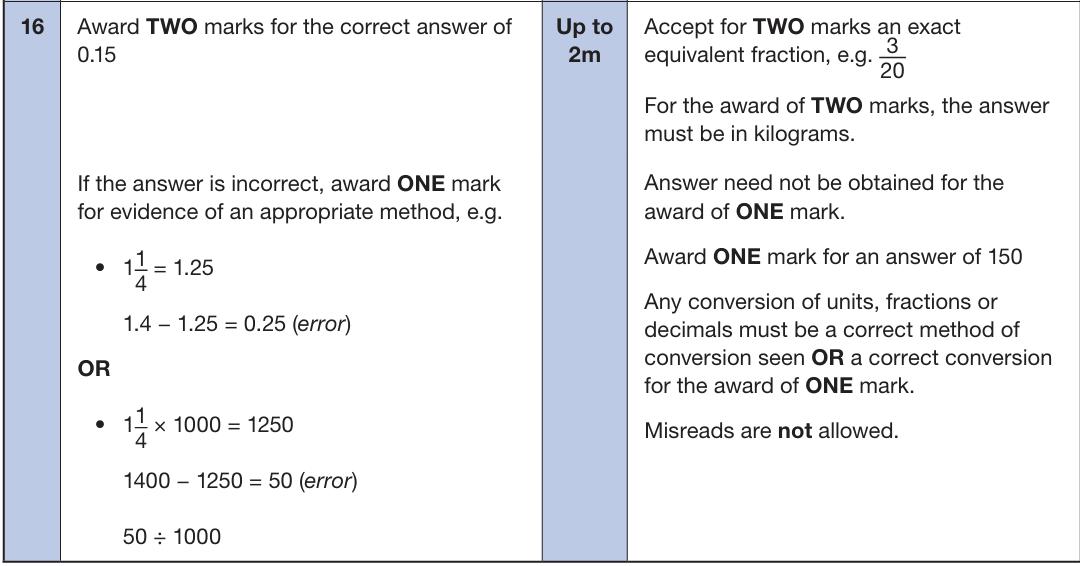
Example questions:



Example question:
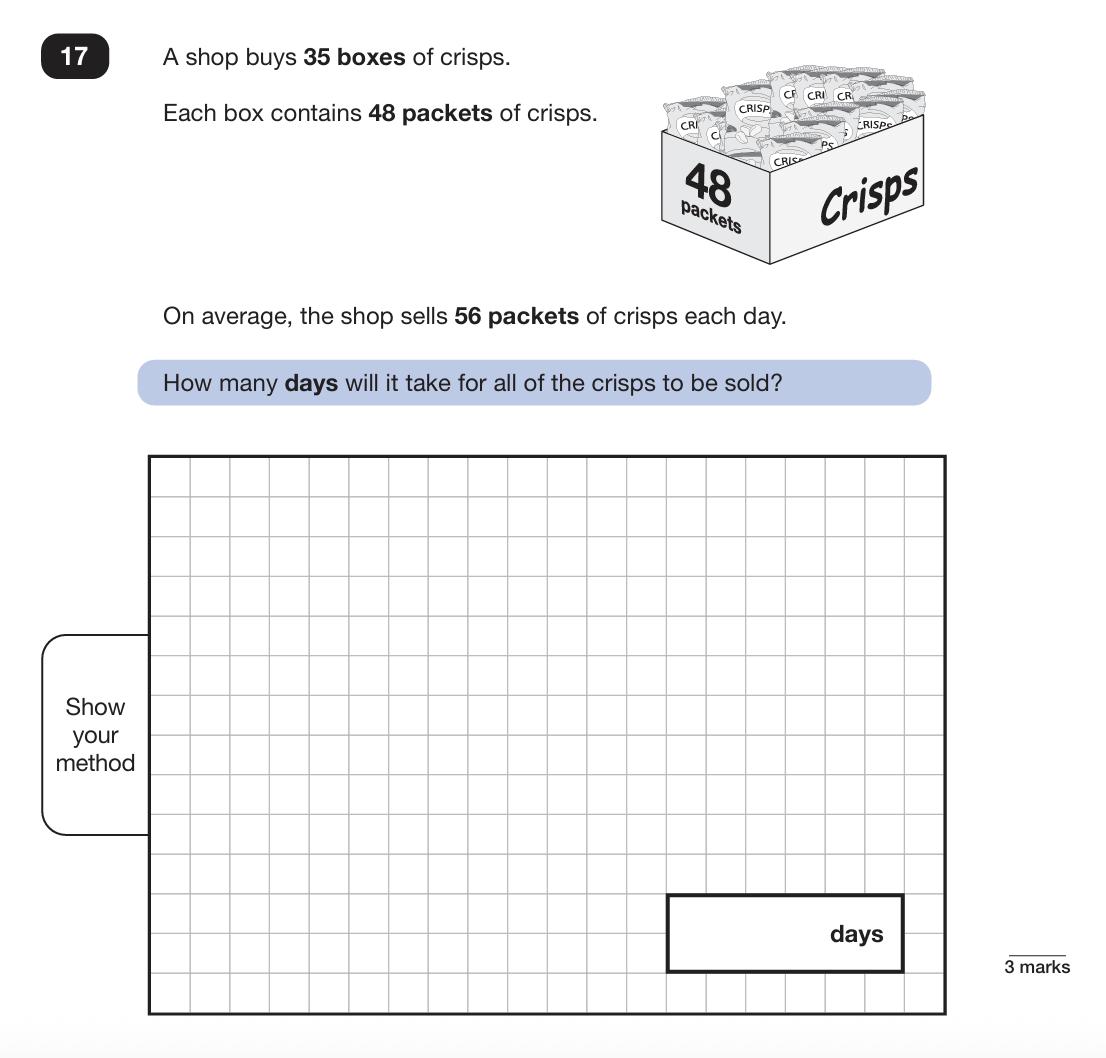

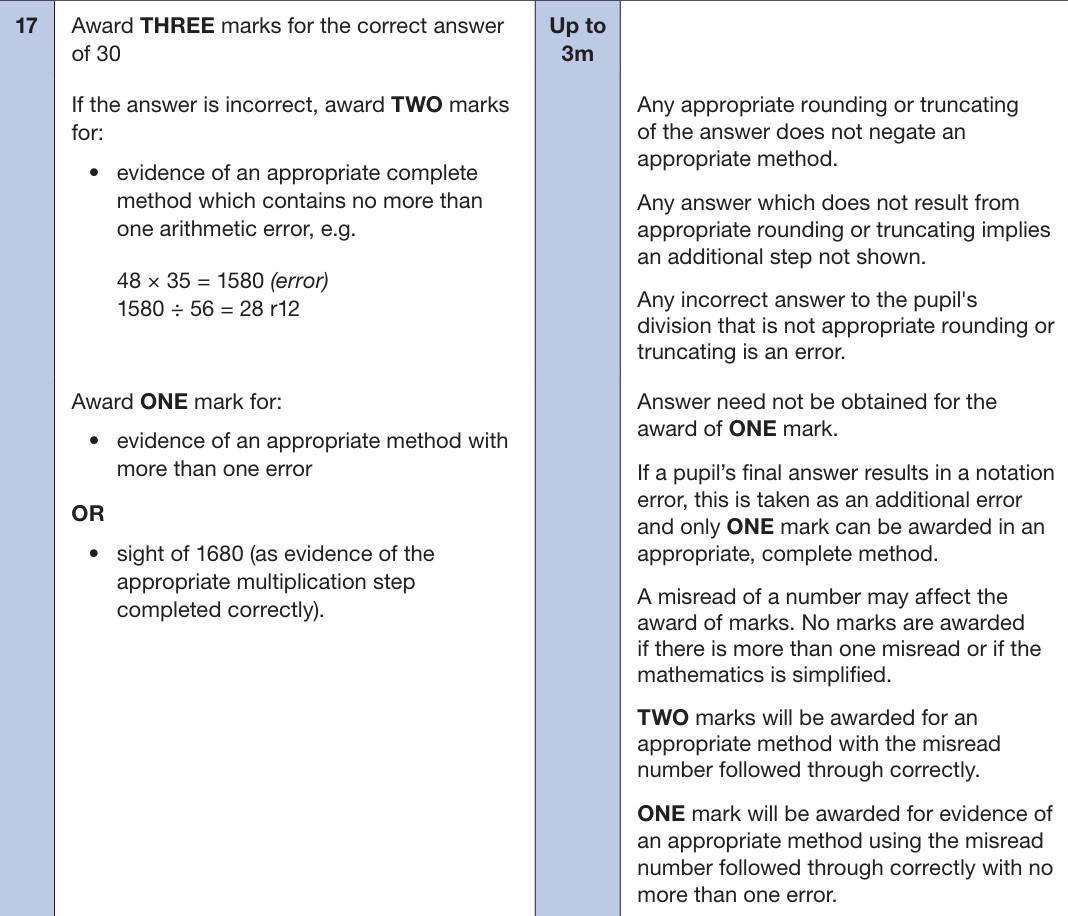
Supporting your child in preparing for the SATs
Firstly, a positive attitude goes a long way. Give them as much encouragement and support as you can (but we don’t need to tell you that)!
Tips:
● Don’t use past papers as they are used in school to prepare the children.
● Attend any SATs meetings at school (or read any literature sent home).
● Talk to your child’s class teacher if you have any concerns rather than worry your child.
● Encourage your child to talk to their teacher or a trusted adult (including yourself) about their anxieties. Don’t forget that a small amount of anxiety is normal and not harmful.
● Give your child a quiet, distraction free space to complete homework or study.
● Give your child time to go outside and reduce screen time.
● Ensure your child is eating and drinking well and getting a good amount of sleep.
● Plan something nice and fun for the weekends before and after SATs. This will help them to relax before the SATs and give them something to look forward to after.

Supporting your child in preparing for the SATs
Further tips:
● Create a revision timetable that works for you and your child. For some families, 10 to 20 minute activities over a few days works best. For others, a longer study session one day a week might be better.
● Keep revision light. Going over key skills (times tables, real world mental maths as you are shopping or cooking) is a good way to keep revision light.
● As we said before, avoid using past papers. There are plenty of free or inexpensive SATs practice materials for parents available.
● If you’re looking to support your child further with maths at home, there are lots of good websites with free Year 6 revision resources.

Things to remember about SATs
SATs focus on what children know about Maths and English. They will not reflect how talented they are at science, geography, art, PE…, and they certainly won’t highlight all their amazing personal characteristics.
SATs don’t tell the whole story. Their results will say if they did or did not meet a certain standard but not necessarily by what margin. These thresholds change each year according to the overall national performance, so what was classed as ‘meeting the expected standard’ this year might not be the same as last year. Your school may be able to provide you with more detailed feedback.
SATs are only four days out of a whole Primary School career. In reality, there's one or two papers each day that last 30 to 60 minutes.

What to do if you are worried about your child
SATs often induce a certain degree of worry or anxiety but there is, of course, a tipping point.
SATs anxiety should not:
● Affect a child’s appetite
● Affect a child’s sleep
● Affect a child’s personality
● Induce panic, tears or disengagement from lessons or hobbies
● Be a reason not to attend school.
If any of the above are evident, SATs may be causing an excessive degree of anxiety and may benefit from some additional support. This isn’t about removing the reality of SATs but rather equipping your 10 or 11 year old with the ability to better cope with the situation.

What to do if you are worried about your child
Talk to the school
Sometimes concerns present at home and not at school. If you notice a change in your child, talk to the school so that everyone concerned can offer the support needed.
Talk to your child
Talk to your child about what aspect of SATs concerns them the most. If you can help them pinpoint what is bothering them the most, you can take specific steps to help reassure them.
Encourage your child to talk to their teacher
SATs are obviously linked to school. Don’t be surprised if your child would prefer to seek reassurance from teachers over family members. Try not to project your own anxieties or views about the SATs
Children can be very intuitive. If they see that you are anxious, this could add to their own anxieties. Similarly, if you don’t believe in SATs, your child may reflect this view.

Advice for Year 6 children
● Listen to your teacher.
● The adults you work with all want you to do your best.
● Get plenty of sleep and eat well, this will help your brain.
● Read all the questions carefully. This can help you to avoid silly mistakes.
● Don’t panic. There may be questions you think you can’t answer. Take a deep breath. Read it again. You can always move on and go back to it later. It’s often better to write something rather than nothing.
● Remember that the Year 6 SATs last for 4 days out of your whole life!
“Stay focused in class so you don’t have loads of extra studying to do at home!” – Year 7 pupil’s advice.

